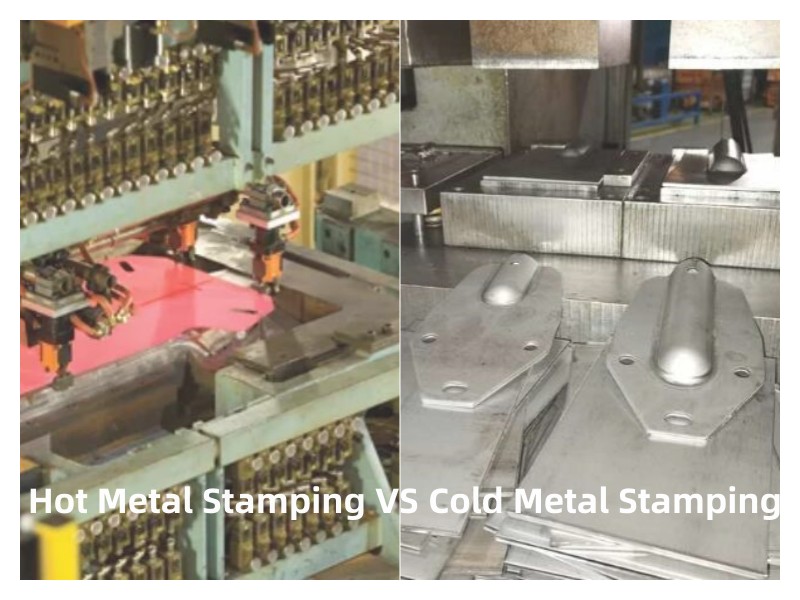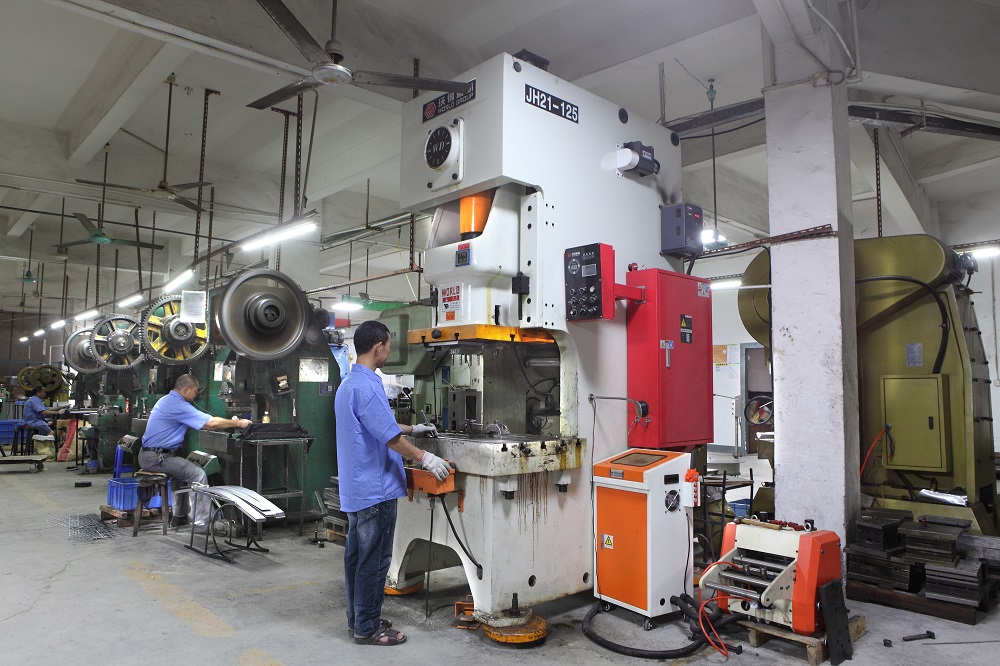In the world of manufacturing, hot metal stamping and cold stamping serve as two of the most pivotal processes. Understanding their differences, advantages, and applications is crucial for procurement, design, and technical professionals who need to make informed decisions about their projects.
Hot metal stamping and cold stamping both refer to methods of shaping and forming metal. However, each method employs a different process and temperature, which can significantly influence the final product’s characteristics. As such, this article aims to provide a detailed comparison between hot and cold stamping processes, offering insights into their respective uses, benefits, and drawbacks.

Hot Metal Stamping
What is Hot Metal Stamping
Hot metal stamping, also known as hot stamping, is a process where metal, typically hot stamped steel, is heated to a high temperature and then shaped by pressing it into a die. The hot stamp process enhances the metal’s formability and reduces its hardness, allowing for the creation of complex shapes with a high level of precision.
Advantages of Hot Metal Stamping
In the hot metal stamping process, the metal piece is heated until it reaches its transformation temperature. This heat loosens the metal’s atomic structure, making it more malleable and less likely to crack or break during the stamping process. This process is particularly beneficial when working with high-strength metals such as hot stamp steel that would otherwise be difficult to form at room temperature.
Disadvantages of Hot Metal Stamping
However, hot metal stamping is not without its disadvantages. The process requires a significant amount of energy to heat the metal, making it less cost-effective compared to cold stamping. It also presents potential safety risks due to the high temperatures involved.
Cold Metal Stamping

What is Cold Metal Stamping?
Moving onto cold stamping, also referred to as cold metal stamping, it’s a process where the metal is shaped or formed at room temperature using high pressure. Unlike hot stamping, cold stamping does not require the metal to be heated, which means it consumes less energy and is generally faster and more cost-effective.
The cold stamping process involves placing a sheet or strip of metal between two dies, which are then pressed together to form the desired shape. This process can be used on a variety of metals, including cold stamping steel and cold rolled steel stamping, making it highly versatile.
Advantages of Cold Metal Stamping
Cold stamping offers a number of advantages, primarily its cost-effectiveness due to lower energy consumption. Also, the absence of heat in the process reduces the risk of distortion or warping, ensuring a high-quality finish. Moreover, cold stamping allows for high production rates, making it ideal for large-scale manufacturing processes.
Disadvantages of Cold Metal Stamping
However, there are some drawbacks to the cold stamping process. Metals subjected to cold stamping tend to harden and become less ductile, which can limit the complexity of shapes that can be achieved. Also, cold-stamped parts may require further finishing processes to achieve a smooth surface, which can add to the overall production cost.
Comparative Analysis: Hot Stamping VS Cold Stamping
While both hot metal stamping and cold stamping are fundamental manufacturing processes, their specific applications, pros, and cons differ. When choosing between the two, it is important to consider a variety of factors including the quality of output, cost-effectiveness, speed and efficiency, material compatibility, and environmental impact.
Quality of Output
Both hot and cold stamping can produce high-quality parts, but the choice often depends on the complexity of the design. Hot metal stamping is known for its ability to create intricate shapes and designs, as the heat makes the metal more pliable and less likely to crack. On the other hand, cold stamping might result in hardened parts with lesser ductility, which might limit the complexity of the design.
Cost-Effectiveness
In terms of cost, cold stamping often has the upper hand. It consumes less energy as it does not require the heating of metal, thus lowering production costs. However, hot metal stamping might be cost-effective in scenarios that need complex designs with a high degree of precision, as it could reduce the need for secondary machining processes.
Speed and Efficiency
Cold stamping is generally faster than hot metal stamping due to the absence of a heating process. However, if the design is complex, hot stamping might be more efficient as it reduces the chances of the metal cracking or breaking during the forming process.
Material Compatibility
While cold stamping works with a wide variety of metals, some high-strength materials like certain types of steel may be better suited to hot metal stamping. The high temperature makes the metal more malleable, allowing for more complex designs.
Environmental Impact
Considering the environment, cold stamping is typically more eco-friendly. It consumes less energy due to the lack of a heating process, resulting in a smaller carbon footprint.
To learn more about the key differences between hot and cold stamping, please check out our detailed guide on Metal Stamping Process.
Conclusion
When it comes to the question of hot metal stamping versus cold stamping, there is no one-size-fits-all answer. Both methods have their own unique strengths and weaknesses, and the choice between them should be guided by factors such as the complexity of the part design, type of material used, production cost, and environmental considerations.
In conclusion, it is essential to choose the right stamping process based on your specific project requirements. Whether you opt for hot metal stamping or cold stamping, the end goal should always be to achieve a perfect balance between cost, quality, and efficiency.
For more insights into the world of metal stamping, do visit our page on everything you need to know about metal stamping. We, at Chengli Hardware, aim to provide top-notch information and services to our clients across the globe. Thank you for reading!
Frequently Asked Questions
Is stamping cold working?
Yes, cold stamping is a type of cold working process. This process involves the shaping of metal at room temperature using dies and stamps, and it does not require the application of heat.
What is the use of hot stamping?
Hot metal stamping is used to form complex shapes and parts from high-strength materials. It involves heating the metal until it is malleable and then forming it into the desired shape using dies and punches. It is particularly used in the automotive and aerospace industries for manufacturing parts that require high strength and rigidity.
What is the basic stamping process?
The basic stamping process involves placing a sheet of metal between a die and a punch, which are then pressed together to create a specific shape or pattern. This process can be done at room temperature (cold stamping) or at elevated temperatures (hot metal stamping).
Is hot stamping expensive?
While the cost of hot stamping can be higher than cold stamping due to the energy required to heat the metal, it can also potentially reduce costs by minimizing the need for secondary machining processes, particularly for complex designs.
